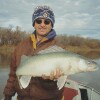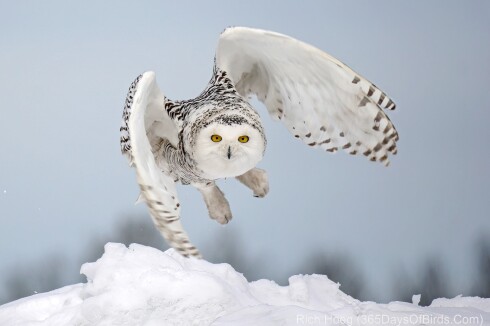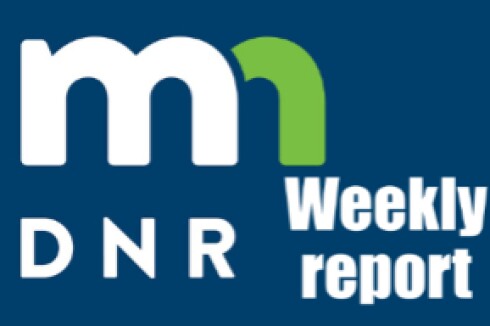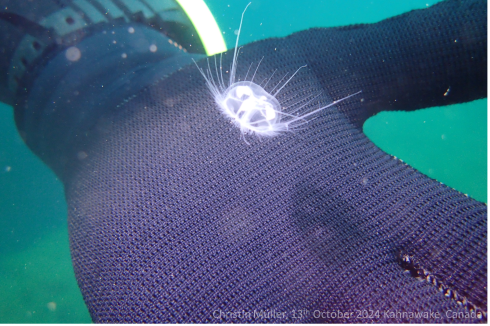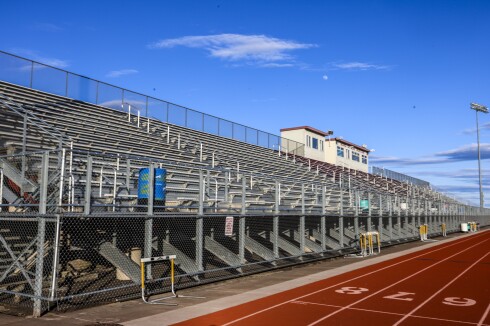The Department of Natural Resources will launch a multi-year study of northwest Minnesota’s elk herd beginning in January 2025 in an effort to learn more about reproduction and survival rates and build on information gathered during an initial 2016-2018 research project.

According to Eric Michel, a research scientist for the DNR in Madelia, Minnesota, the 2016 study – the first of its kind on elk in the state – provided basic “foundational” information such as home ranges and habitat preferences of cow elk. But where that study was limited to cow elk, fitting the animals with tracking collars and inserting vaginal implant transmitters (VITs) into pregnant cows, the upcoming research project includes collaring bulls and calves, as well, Michel said.
ADVERTISEMENT
All three of Minnesota’s elk herds – the “Kittson Central” and “Caribou-Vita” herds in Kittson County and the Grygla herd in Marshall and Beltrami counties – will be part of the study, he said.
The Kittson-Central herd mainly inhabits an area near Lancaster, Minnesota, while the Caribou-Vita herd routinely crosses between Manitoba and northeast Kittson County.
“We’ll be collaring some individuals from each of the three subpopulations so we have a representative sample of elk across the elk range,” Michel said.
Closer look
As part of the study, the DNR will contract with a helicopter crew that specializes in aerial capture to catch and collar up to 25 cows and 15 bulls each during the winters of 2025 and 2026, Michel said, for a total of 80 adult elk.
“That’s kind of our high-end estimate, but that’s what we’re shooting for,” he said. “We’re going to look at all demographics within that population. We’ll implant (VITs) into the cows upon capture, and then we’ll also capture and collar the calves next summer.”

The VITs, part of efforts to monitor reproductive success and calf survival, are sensitive to temperature changes that occur when the calf is born and the VIT is expelled from the cow elk’s body, Michel said.
ADVERTISEMENT
“That change in external temperature sends essentially a mortality signal to our VHF equipment when we’re out there monitoring,” he said. “Then, you can go search the area and you just have a much more refined area to search for the calf, compared with trying to do that opportunistically and just combing the ground.”
The collars used on elk calves expand as the animal grows, Michel said, and break off once the calves reach a certain size.
“Then we can retrieve the collar without having to handle the calf again,” he said.
Growing the herd
The upcoming research project comes on the heels of legislation passed during the 2024 session of the Minnesota Legislature allowing the DNR to increase the northwest’s elk herds to provide for a healthier, more genetically diverse population. Researchers will collect biological samples to assess those genetics, Michel said.

Prior to the legislation, the DNR for the past several years was mandated to maintain a pre-calving population of no more than 50 to 60 elk in Kittson County, not including the Caribou-Vita subgroup.
Elk from northwest Minnesota also will be the source of a planned restoration project to establish a fourth herd near the Fond du Lac reservation area of northeast Minnesota in the next couple of years. The upcoming study will “ultimately help inform” that restoration, Michel said, but learning more about managing the northwest herd is “first and foremost” the priority.
ADVERTISEMENT
“We don’t have any survival information on the adults or the calves” in northwest Minnesota, Michel said. “We think that survival is pretty high, just from our aerial surveys. That population was growing and growing and growing. And finally, once we started harvesting some cows, we started to see it plateau a little bit, but we really don't know what natural mortality looks like in that population.”
Taking a closer look at reproduction also will be “really interesting,” Michel said.
“We think we have some high reproductive output, but we just don’t know what that looks like,” he said
Lack of snow grounded the DNR’s aerial elk survey last winter, but crews in 2023 counted 75 elk in the Kittson Central herd. The DNR also flew both sides of the U.S.-Canada border during the winter 2023 survey to sample the Caribou-Vita herd, counting 96 elk in Minnesota and 131 in Manitoba. The survey tallied 29 elk in the Grygla survey block – a 10-year high but still below the benchmark of 30 to 38 elk required to hold a season.
In part because it couldn't fly a survey last winter, the DNR offered only 10 elk tags this year – five in Zone 20 near Lancaster (three either-sex and two antlerless) and five either-sex in Zone 30, the Caribou-Vita herd – down from 17 in 2023. In addition, the Red Lake Nation recently announced that it will offer 30 elk tags to tribal members in northwest Minnesota again this year, under hunting rights guaranteed by a treaty signed in 1863.
Elk Herd Map PDF by Brad Dokken on Scribd
Mixing populations
One of the goals of the original 2016 project was to look at how individual cow elk intermingled among the three subpopulations. There was “hardly any mixing of those populations,” said Michel, who started with the DNR in March 2019, after the initial study was complete.
ADVERTISEMENT
Most of the cow elk collared in 2016 were from the Kittson Central herd, he said.
“I think they only documented one cow that really kind of went on an excursion and went up into Canada and came back,” Michel said. “They didn’t see hardly any mixing of those populations.”

Whether that’s the case with bull elk, as well, remains to be seen.
“How does that change now that we will have bulls collared and on the landscape?” Michel said. “What does that look like? How are those animals moving across the landscape? What does it look like when you have a male calf hit 1 year of age?
“We’re hoping to capture some dispersal events from those calves that we collar. Where are they going? And how do they mix with their populations?”
Public input on tap
Using a database with some 1,600 contacts, based on parcel data, the DNR is sending letters to a “substantial number” of landowners seeking permission to gain access, Michel says, should the need arise during the course of the project.
“Those are all properties that elk could potentially be on, and we’re just trying to reach out and gain access to as many properties as possible,” he said. “We’re looking forward to engaging with our landowners and cooperating with them on this and collaborating with them on this project. They are going to be a really important part of the success of this project. So, we’re looking forward to interacting and answering questions and really getting to know some of those folks.”
ADVERTISEMENT
Landowners in Minnesota’s elk range traditionally have had mixed feelings about the herd, given the animals’ size and tendency to cause depredation and other problems for ag producers.
“They’re valid concerns that we have to consider, and that’s part of why we’re doing this work, as well, is just to get more information to better manage the population,” Michel said. “You can’t adequately manage a population if you don’t have the appropriate information to act upon.
“So, that’s part of this process.”
The DNR has scheduled in-person public meetings on the research project and elk management for 6 to 8 p.m. Tuesday, Sept. 10, in the Northland Community and Technical College Performance Art Theater, 1101 state Highway 1 E., Thief River Falls; and 6 to 8 p.m. Tuesday, Sept. 17, at Fond du Lac Tribal Community College, 2101 14th St., Auditorium Room 195, Cloquet, Minnesota.
A virtual meeting also is planned at a date to be announced.
The DNR has hired a University of Minnesota doctoral student to oversee the fieldwork portion of the study, and the tracking collars will be monitored for 30 months, Michel says. The collars will transmit one GPS coordinate a day and collect six points daily, which researchers will download upon retrieving the collars.
The project has a total budget of $933,000, with funding provided by the Minnesota Environment and Natural Resources Trust Fund as recommended by the Legislative-Citizen Commission on Minnesota Resources and approved by the Minnesota Legislature. The DNR also provided in-kind support.
ADVERTISEMENT
Bottom line, there’s still much to learn about elk in Minnesota. The upcoming project will help fill that void.
“That’s what makes this project so exciting is there’s just a lack of information on this herd,” Michel said. “Getting more information is going to help us better manage that population.”
- On the web:
For more information, check out the elk management page on the DNR website at dnr.state.mn.us/elk.


